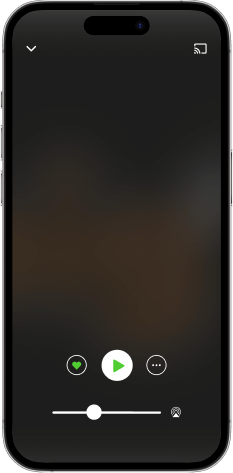eDNA with Georgia Nester | The Deep Sea Podcast | Episode 59
“Exploration is about the place, adventurism is about the person, science is about the question”
Professor Alan Jamieson
In an episode recorded earlier than usual, which is to say not recorded late, and so perhaps recorded right on time?... we are talking about environmental DNA or eDNA.
Thom is headed off to Norfolk Island, north of New Zealand, to characterize the unique life in the region and hopefully not be eaten by sharks. Alan’s been up to secret things, organizing everyone’s lives and, for a change, is recording this episode from the same country as the last one.
In the news, Thom and Alan discuss a recent paper about the extent of ocean exploration, the valuable research it was based on, and the unfortunately defeatist tone. There is a lot left to do, but we have done so much!
Also in the news: Bottom trawling releases not only organic carbon into the ocean but also pyrite, which reacts with oxygen in the water and reduces the oceans’ ability to absorb carbon from the air. An art installation pairs a Sri Lankan artist with JAMSTEC and NuStar Technologies for a collection of steel cubes located 7,000 meters (23,000 feet) below the ocean close to the Marianas Trench. The cubes are housed in a seismic monitoring system designed for registering tectonic plate movements. And finally Al and Thom discuss gene mutation in deep-sea fish and a new paper that gives evidence to an old theory that some deep-sea fish are “ancient survivors,” from dinosaur times, while others are “new immigrants,” post mass extinction.
For this month’s interview, we speak with Dr. Georgia Nester, a colleague of Alan’s from the University of Western Australia, about eDNA (Environmental DNA is any genetic material left behind by organisms in an environment). She talks about how several collection methods, eg.: Niskin bottles, sponges and paper filters, located on the deep-sea lander system, can retrieve different types of eDNA from the deep. Georgia also touches on how diel migrators can really mess with eDNA data, and larvae gave her a surprise when she kept getting hits from very deep-living fish in her surface samples. Georgia even used a water sample to locate surprise eDNA evidence of the Giant Squid in Australian waters, which Al takes as a chance to remind Thom of his Antarctic colossal squid failure.
Alan talks about how valuable he thinks eDNA is, how it can give a great snapshot of what can’t be seen on the footage or in the submersible, and how it might be able to narrow down species that are difficult to catch, like Bassozetus cusk eels.
Hold onto your buoyant elbow glands because we’ve got a great episode here!
Support the show
The show is self-sustaining, but we couldn’t do it without you. Here’s a link to our page on how to support us, from the free options to becoming a patron of the show. We want to say a huge thank you to those patrons who have already pledged to support us:
Rainstorm Wolfe
Shea
Racist Teacup
Don’t forget that becoming a patron also gives you access to the Discord and a like-minded community of deep-sea folks, including scientists, artists, students, and previous guests! Deep-sea news often breaks there first.
Check out our podcast merch here!
Feel free to get in touch with us with questions or your own tales from the high seas at:
[email protected]
We’d love to actually play your voice, so feel free to record a short audio note!
Thanks again for tuning in; we’ll deep-see you next time!
Find out more
Social media
BlueSky: @deepseapod.com
Twitter: @DeepSeaPod
Instagram: @deepsea_podcast
Keep up with the team on social media
Twitter:
Alan - @Hadalbloke
Thom - @ThomLinley
Instagram:
Thom - @thom.linley
Inkfish - @inkfishexpeditions
BlueSky:
Thom @thomaslinley.com
Reference list
News
Only 0.001% of the deep sea has been seen in 70 years.
Bottom Trawling stops ocean absorbing carbon dioxide
Art Installation near the Marianas Trench
Deep-Sea Fish have independently evolved the same Gene Mutation for pressure
Interview
Nester, G. M., Suter, L., Kitchener, J. A., Bunce, M., Polanowski, A. M., Wasserman, J., & Deagle, B. (2024). Long-distance Southern Ocean environmental DNA (eDNA) transect provides insights into spatial marine biota and invasion pathways for non-native species. Science of the Total Environment, 951, 175657.
Takahashi, M., Saccò, M., Kestel, J. H., Nester, G., Campbell, M. A., Van Der Heyde, M., ... & Allentoft, M. E. (2023). Aquatic environmental DNA: A review of the macro-organismal biomonitoring revolution. Science of the Total Environment, 873, 162322.
Credits
Theme: Hadal Zone Express by Märvel
Logo image: Microsoft CoPilot
Song of the month: Crazy Train by Ozzy Osbourne, performed by William Jamieson


